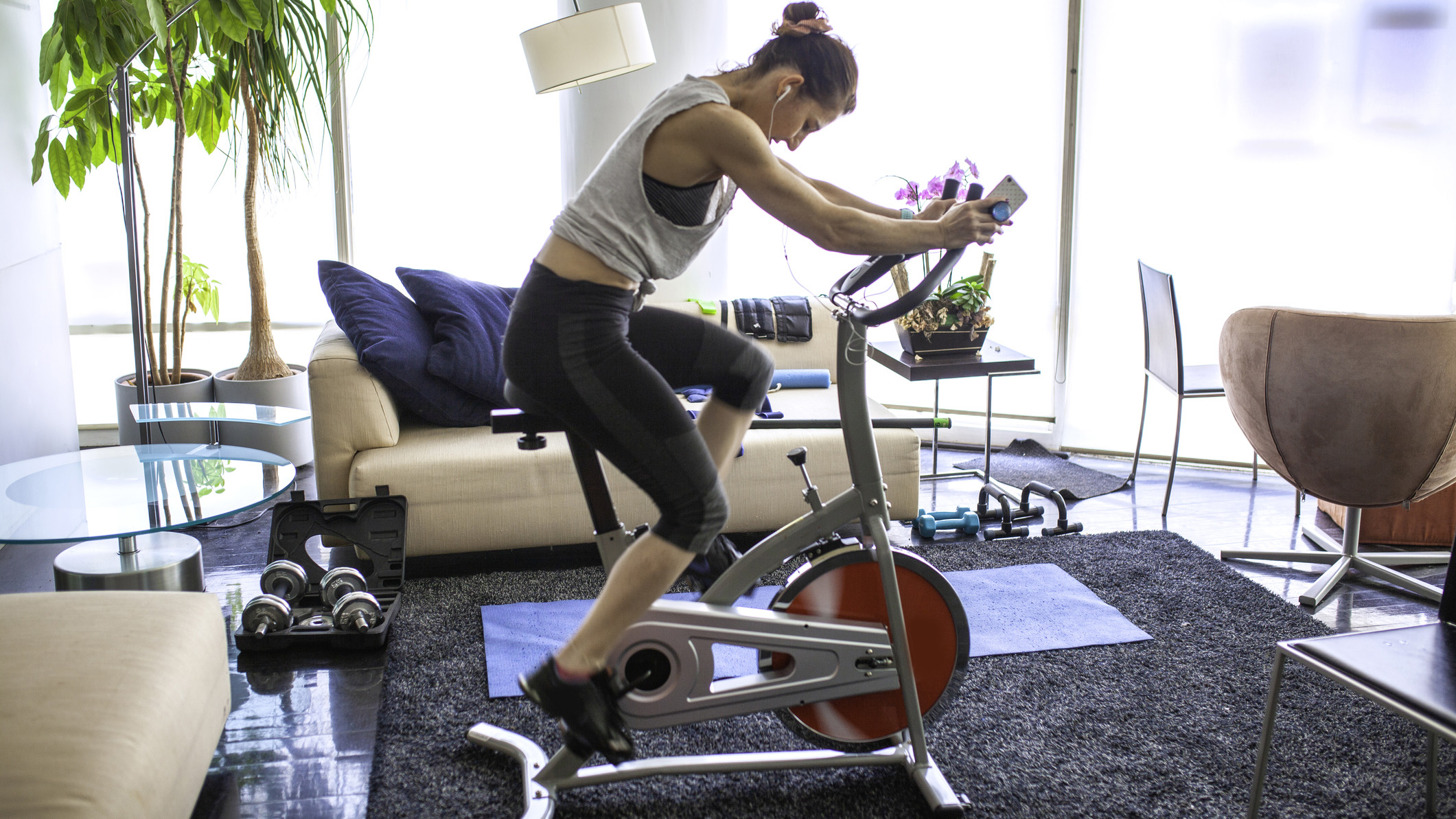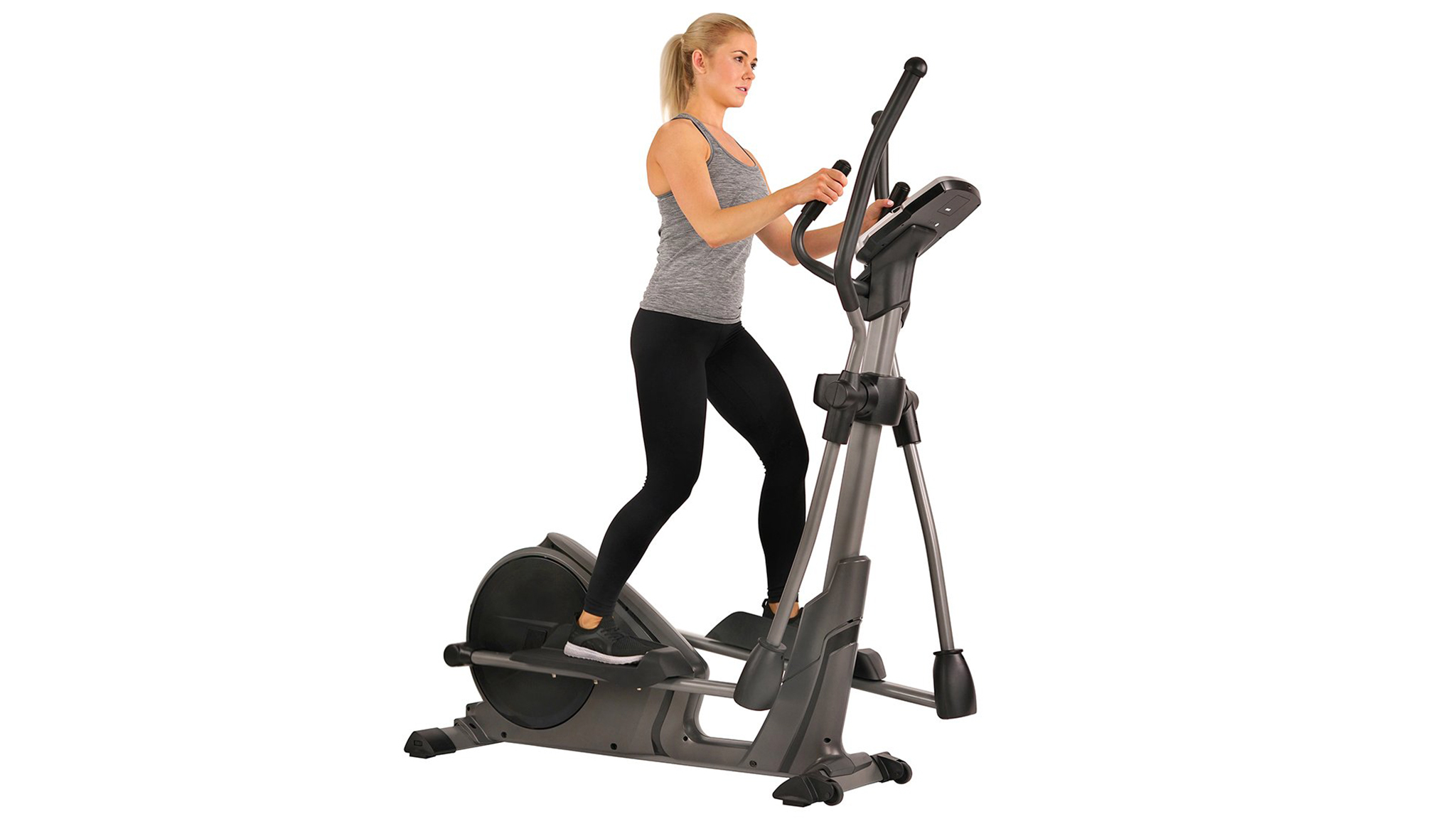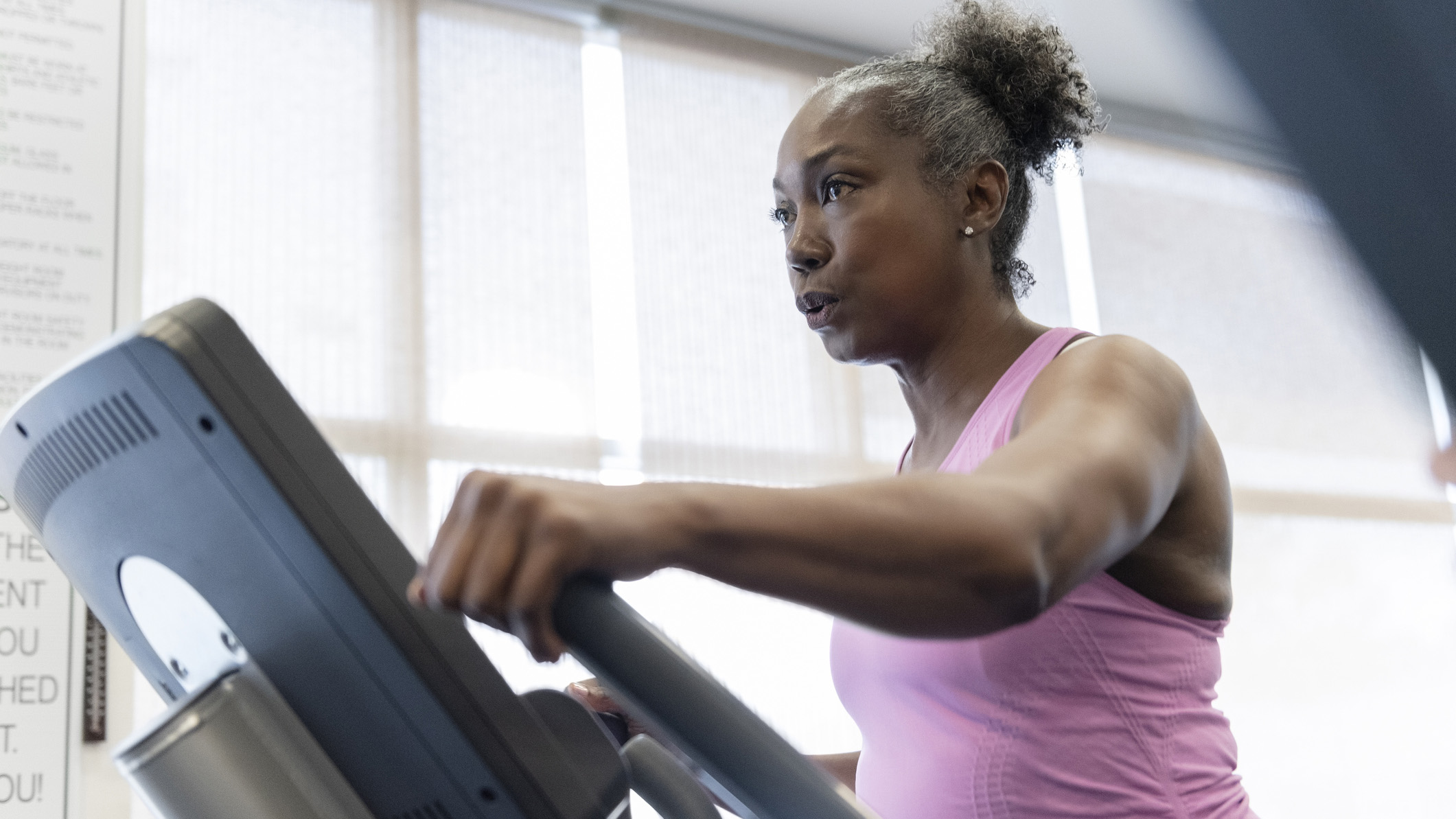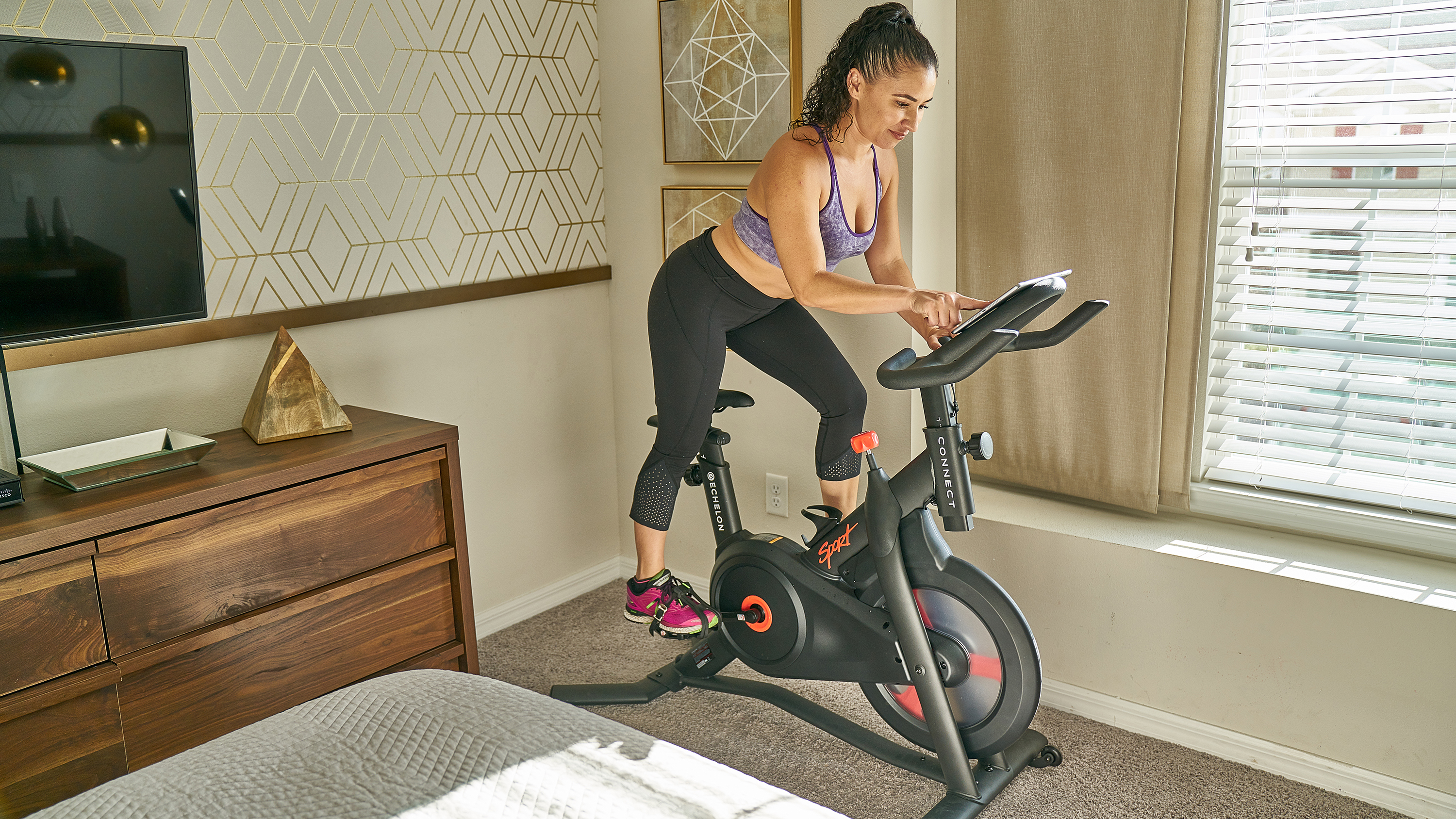Exercise bikes vs ellipticals: Which cardio machine is better for you?
When it comes to exercise bikes vs elliptical trainers, space and budget are two of your biggest factors. Here’s why…

Over the past year alone, home exercise equipment has been flying off the shelves. If you’re ready to buy too, and you want a cardio machine, one of your biggest decisions could be between exercise bikes vs ellipticals. But there are two challenges ahead of you: finding enough space for using and storing your machine, and sticking to a budget.
While we’d all love to take our pick of cardio machines regardless of cost or size, that isn’t an option for most people. So how do you pick between the best exercise bikes and the best elliptical machines? We have answers!
In our exercise bikes vs ellipticals comparison, we look at the pros and cons of each home cardio machine. The aim? To help you figure out which one is better for your fitness goals, home and budget. Either would make a great addition to a home gym weights system, so you can then cover off strength training and aerobic exercise.

Exercise bikes vs ellipticals: Quick pros and cons
This is a tough one to call, as there are plenty of pros to both machines. On the flipside, neither are perfect. Here’s a run-down on the main benefits and drawbacks to each…
BIKES
- Pro: Low-impact, making some a good choice for injury rehab
- Con: You can get a little ‘saddle sore’ during endurance rides
- Pro: Can be used with online classes for guided workouts
- Con: May get boring after a while unless you subscribe to online cycling workouts
- Pro: Folding designs available for small homes
ELLIPTICALS
- Pro: Good for people who want a one-and-done workout
- Con: Heavy, bulky machines that require more space
- Pro: You’ll need less other fitness equipment for training
- Con: Not as sleek or sexy as a bike
- Pro: They combine aerobic and strength-training exercises
If you already prefer cycling outdoors, you might be better off with one of the best bike trainers instead. These transform mountain and road bikes into indoor cardio machines, so you could save yourself some money.
Sign up to receive the latest news, reviews, buying guides and deals direct to your inbox
Exercise bikes vs ellipticals: Brands and prices
Cross-trainers used to be more expensive because they are bigger, and designed to offer a greater variety of workout. However, the price tide is now turning as more people favor bikes as the home workout machine of choice.
This is particularly true for the Pelotons and Echelons of the world, which often come with time-limited free subscriptions to online fitness programs. These include cycling workouts, plus yoga, HIIT and more. Once the free trial is over though the subscription costs will add to your overall cost of your chosen bike. Something to keep in mind before buying.
That said, you can buy cheap cross-trainers for less than $500. The Sunny Health and Fitness SF-E3912 Elliptical Trainer is a good example of an affordable machine that’s good for beginners, but not for advanced workouts.

The prices do shoot up quite a lot though, with the real top-end ellipticals costing over $1,800. The sweet spot is around $700-$1,200, so we’d recommend looking in that price bracket if your budget allows.
Exercise bikes used to be much cheaper, but popular brands are pushing the prices up for proper smart (connected) bikes. You can buy basic stationary bikes for as little as $120 (read our Exerpeutic Folding Magnetic Upright Exercise Bike review for an example), but these don't give you an effective workout.
Again, we’ve found that $700-$1,000 is the sweet spot for affordability versus performance. Our top choice, the Echelon Smart Connect EX3 Max Bike review, comes in at $999 but has everything you’ll need for on and off-bike training.
Exercise bikes vs ellipticals: Key considerations
Because both stationary bikes and cross-trainers offer similar benefits, it’s essential to consider how these machines differ from each other. For starters, the way they’re designed is completely different. That means the movements required when you exercise are very different too.
Exercise bikes are just that: stationary bikes for cycling indoors. They come in different styles, like recumbent (where you sit back in the saddle) and spin bikes. Most enable you to pedal and change the resistance too, depending on how hard you want to work out. You could also use a fitness tracker to keep tabs on your workouts.
In contrast, ellipticals have two handles that you move back and forth with your arms, while your legs make big striding motions on two large pedals. You can also change the resistance for a more challenging workout. The important thing about cross-trainers is the difference in motion – it’s a little like running in mid-air, but not as natural as running along a road.

Exercise bikes vs ellipticals: Space at home
As well as design and movement, size plays a role when choosing between exercise bikes vs ellipticals. There are plenty of compact cross-trainers, but overall they take up far more room than bikes. That’s because they are naturally much bigger machines, designed to work your arms and legs simultaneously.
The other space consideration with ellipticals is ensuring you leave enough room around it so that you can workout comfortably without hitting any furniture or walls. These machines are very heavy too, so you’ll need an exercise mat beneath to protect your floor. And once your elliptical is in place, you won’t be able to move it as easily as a bike.
If you have a small space for fitness at home, you may struggle with anything other than an exercise bike. We would advise against a recumbent style, as these are very long and take up acres of floor space. Instead, look for a folding stationary bike that can be leaned flat-ish against a wall when not in use.
Don’t forget that some spin bikes also come with small dumbbells, so you can get an upper body workout in too, though perhaps not as effectively as with an elliptical.
Result: If you are short on space, choose a folding bike. If space isn’t an issue, and you want to work out your arms and legs, go for a cross-trainer.

Exercise bikes vs ellipticals: You want a whole body workout
You can get an intense workout on an exercise bike, especially if you push up the intensity or choose a spin bike. However, it’s mostly your legs that are doing all the hard work. So if you’re looking for a cardio machine that works your legs, glutes and arms, an elliptical is the better option.
You could still choose to work your legs more on some days than others – some people use cross-trainers by holding onto a bar at the front, which allows their arms to rest and just puts their legs to work. But it’s great to have the option to move almost every muscle in your body every time you work out.
Result: Ellipticals will win over bikes every time when it comes to a proper, full body workout. Why? Because they are designed to work a far larger number of muscles in your body compared to bikes.
Exercise bikes vs ellipticals: You’re rehabing an injury
Many people need to consider their personal health history when choosing between the exercise bikes vs ellipticals. Luckily, both of these cardio machines offer low impact workouts. That means there’s no pounding of your foot against the floor that could cause a problem for your joints or exacerbate knee or ankle injuries.
What’s more, both machines enable you to drop the intensity right down and go slow whenever you like. That way, you can slowly build up your stamina, strength and speed over time. However, it largely depends on the nature of your injury - and don’t attempt any exercise without speaking to your doctor first.
Although cross-trainers are kinder to your joints than, say, a treadmill, they still require a stepping motion, and your weight is pressed down onto your feet. For some people with knee or ankle problems, cycling is better because you’re still pushing down on the pedals, but not with all of your body weight.

For others though, their knee coming up to a right angle as they cycle can hurt. In that case, an elliptical trainer would be a better option.
Result: If you have your doctor’s permission to exercise again, a recumbent-style bike could be the better choice depending on your injury. That’s because you sit far back in the saddle, placing less pressure on your legs.
Exercise bikes vs ellipticals: Which machine should you buy?
The choice between an exercise bike or an elliptical machine is a tricky one. That’s because both pieces of home fitness equipment offer you a similar kind of cardio workout, and there’s not much in it when it comes to price.
However, there are several differences. For example, ellipticals need more room and give your arms a better workout. Whereas bikes are great if you want to work your legs, train for road cycling, or you’re recovering from injury. That latter is important, because even a low impact cross-trainer might put too much pressure on your joints.
Ultimately, pick the machine you think you’ll enjoy using the most. There’s no point spending several hundred dollars on a bike or elliptical for it to just gather dust and take up space.
If you have cycled before and you love keeping fit that way, choose the bike. Bikes also win if you have limited space and budget. For people with little time to workout and want to target most of their body with one machine, the elliptical is a better choice. Just remember that they are bigger and generally more expensive.
Becca is an experienced tech, health and fitness journalist with bylines on many leading brands including TechRadar, New Scientist, Wired and others. For Top Ten Reviews, Becca loves writing about sleep and wellness, including why good sleep hygiene can help you snooze better than ever, and how to get more shut-eye (yes, it's possible). Becca is also the author of Screen Time, which looks at how we can all make peace with our devices and find our 'techquilibrium'.

